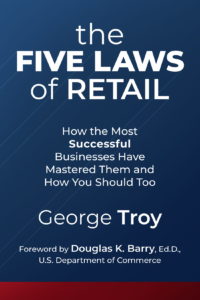Why Easter 2017 Could Bring a Resurrection for Retailers
Many holidays, like Christmas and Independence Day, fall on the same date every year. But Easter can fall on almost any Sunday in March or April. The actual date is calculated according to a lunar calendar as the first Sunday after the first full moon that occurs on or after the spring equinox.
So in 2017, Easter will be on April 16, which is one of the latest dates; in contrast, Easter fell on March 27 last year, which was one of the earliest possible dates.
Why does this matter to retailers? It has to do with the seasonality of fashion goods, expected weather patterns, school calendars, and a few other factors. These factors may affect different retailers in different ways, but the same fundamental rules and dynamics—what I’ve named The Five Laws of Retail—apply to all forms of retailing. The term should include brick-and-mortar stores, ecommerce, catalogues, and mobile. In other words, retailing means all the channels through which people and companies large and small sell their wares.
Fashion Is Seasonal … and Weather Matters
Most apparel businesses start slowly converting from fall/winter to spring/summer before Christmas and then make a full conversion in January and February.
But when Easter falls in March, the weather is often still rainy and cool in most places in the northern hemisphere. Customers just aren’t quite ready for shorts and T-shirts. Conversely, if Easter is in late April, the weather is usually warm and nice, and people are more than ready for a new swimsuit or sandals.
When people are ready to shop for merchandise that is fresh (meaning it hasn’t been sitting on display for weeks or months), retailers benefit from the Second Law of Retail: Turn Is Magic.
Spring Break and Tax Season Matter Too
Most school calendars allow for a spring break, which usually falls the week before or after the Easter holiday. If it is late, people are more inclined to head out to the malls or shopping districts, or look online for deals, because the weather is nicer; it feels like spring, and that puts people in the mood for spring merchandise. The earlier in the season that week falls the less likely people are to buy new spring items; it’s difficult to get excited about purchasing a new grill or patio furniture when there’s still snow on the ground.
It is always good for business when the traditional Easter and spring sales fall close to Tax Day (April 18 this year). Many folks anticipate or have already received their refunds, and the money is (or will be) burning a hole in their pockets. With both Easter and Tax Day in the same week in 2017, savvy retailers will capitalize on this with targeted sales.
Why Easter Sales Matter
Retailers are a famously resilient tribe. By then, disappointments over poor sales during the last holiday are long past. And by Easter 2017 they’ll have had almost four whole months to liquidate old inventory and bring in new assortments, change marketing plans, and do whatever it takes to entice customers back.
So 2017 could see many retailers—even those thought to be dead or dying—rise again if they take advantage of one of the most favorable calendar dates in a decade.
By managing their turn, having the right product, and following the Five Laws of Retail, retailers have a golden opportunity to recover and reposition themselves this year.















